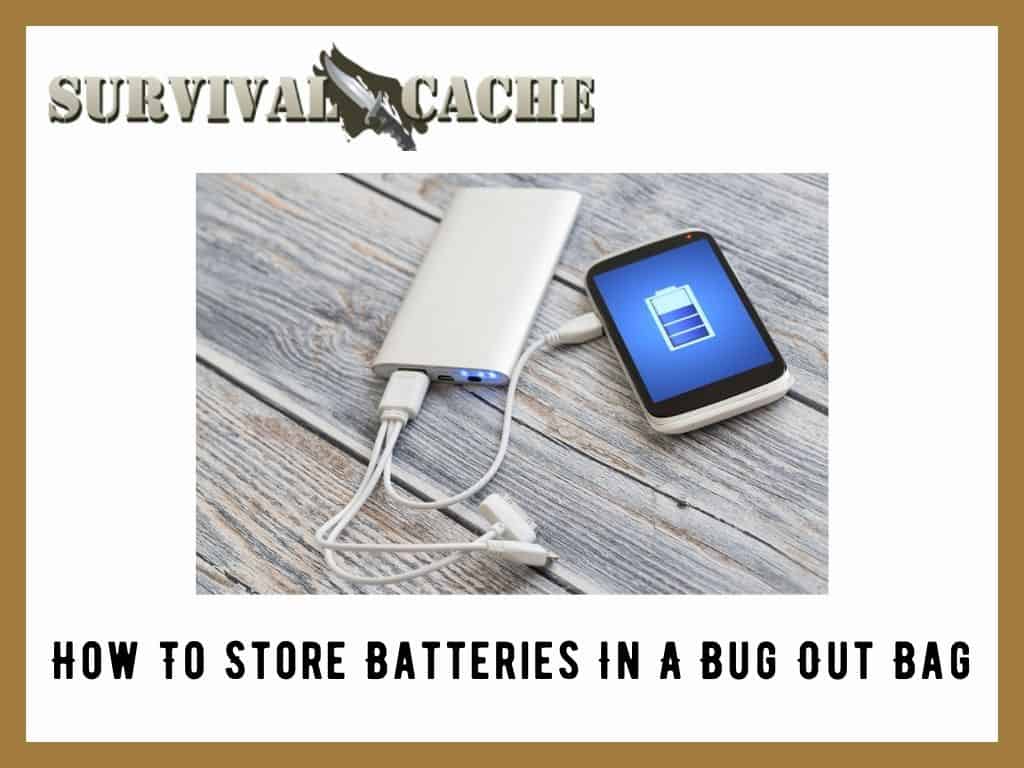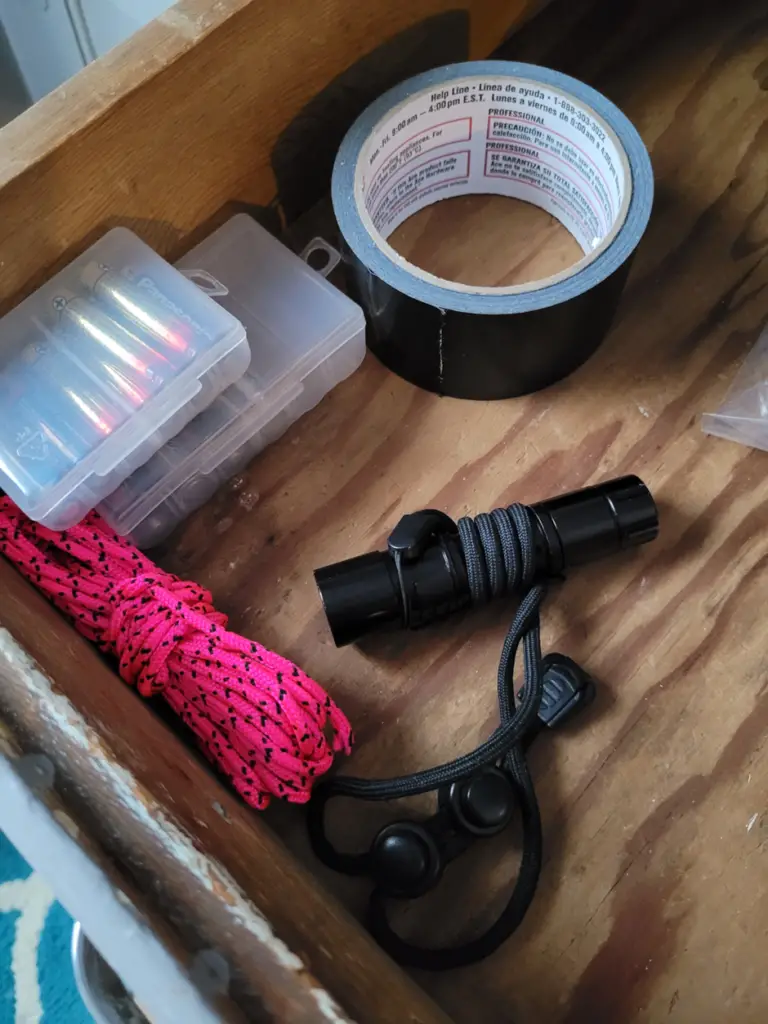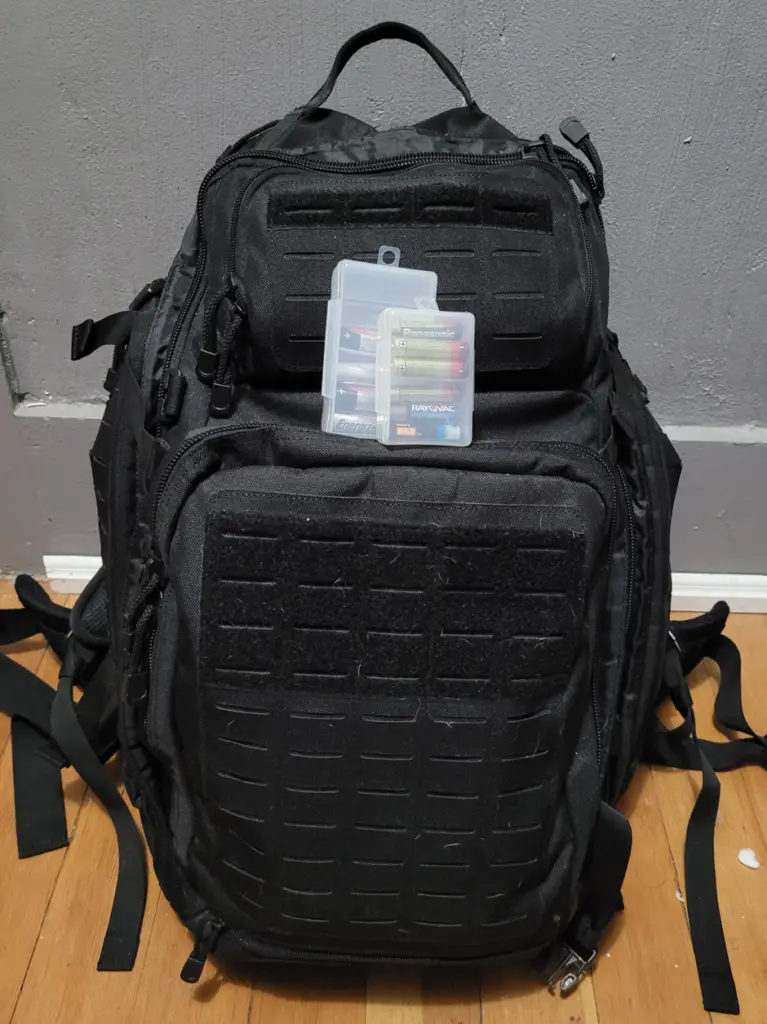
I don’t know about you, but batteries are one of those items I tend to forget about after purchasing.
Once I have them or place them into a device, I expect them to work forever.
Sadly, like many things, that is not the case.
Considering the number of gadgets we use these days; we are quite dependent on batteries. Knowing how to safely store batteries in a bug-out bag and at home will allow us to be better prepared and keep our tools ready to go when we need them.
In the following article, we will be covering the following:
- How Long Do Batteries Last?
- What To Keep In Mind When Storing Batteries
- How To Store Batteries At Home
- How To Store Batteries In A Bug Out Bag
- Safety hazards
- FAQs
SKIP AHEAD
How Long Do Batteries Last?
How long a battery lasts depends on several factors that include the type of battery, how big it is, and the conditions in which it is stored.
Alkaline batteries, which are still some of the most common household batteries used, have a shelf life of between five to ten years.
Of course, alkaline batteries aren’t the only kind there are, some other batteries include Li-ion batteries (lithium-ion batteries), button cell batteries, NIMH batteries, rechargeable batteries, lead acid batteries, (lead acid batteries are like an old car battery) and so on.
But several things can be done to extend the shelf life of your batteries.
What to Keep in Mind When Storing Batteries
Moisture
Batteries and moisture do not go well together. When batteries are stored in humid conditions, corrosion can develop, which takes away from their ability to function properly.
This is why when you store batteries, in possible high humidity conditions, the batteries should be placed in a vapor-proof container, i.e., an airtight waterproof container.
Temperature
Cool temperatures and room temperature are okay ranges for batteries, but temperature extremes in either direction (high temperatures or freezing temperatures) can damage a battery.
After reading numerous forums and manufacturer’s websites storing batteries in the refrigerator or freezer is not a good idea. When you refrigerate batteries, they are exposed to quite a bit of moisture and as stated above, that is not good for a battery.
Additionally, when you store batteries, they should be kept out of direct sunlight as the sun can be damaging and will increase the temperature of the battery. Room temperature or slightly below is about the ideal temperature range for most batteries.
Leaking
Due to temperature extremes or being physically unprotected, batteries can begin to leak or become ruptured.
In both cases, it is best to not use batteries in this condition. Because of this, it’s best to have some form of physical protection when you store batteries.
Orientation
When storing batteries, they should be stored with common ends aligned.
This means all of the positive terminals should be pointed in one direction and all of the negative ends should be pointed in the opposite direction.
This helps to avoid a short circuit, self-discharge, and leakage from occurring.
Usage
When a device is not being used the batteries, ideally, should be removed.
I know, this is a pain and throws a wrench into always being prepared, but batteries stored in a device will shorten their life span even when the device is not being used. During prolonged storage in a device, a battery will still self-discharge.
How To Store Batteries At Home
I don’t know about you, but when I store most batteries at home, it tends to become a free for all. At least that was the way it used to be.
I would start with good intentions by only opening a large pack of new batteries in the corner and taking out what I needed so that the rest of the batteries would stay nicely inside.
Eventually, they would fall out and roll around in a drawer or whatever container I had them in that wasn’t meant for battery storage.
I have since changed my ways, and there are several options you can use to keep your batteries organized and in good condition. Here are a few ideas for battery storage at home.
Original Packaging
Keeping batteries in their original packaging is helpful in keeping the batteries organized and providing some physical protection, like keeping them from touching other batteries or other metal objects.
But this protection is minimal and as you can see from the picture above, this paper/cardboard like material tears and isn’t one hundred percent waterproof. If you want to keep the batteries in the original packing for a while, consider placing the entire thing in a hard container or resealable plastic bag.
Simple and Cheap
One way to store batteries, the cheapest and easiest option, is to simply wrap a rubber band around them. Before binding them, make sure all the batteries like ends are pointing in the same direction to prevent self-discharge.
I use this method from time to time and I like how when I remove batteries from the bundle all I have to do is tighten the band. The main problem with this method is that it doesn’t offer any physical protection, protection against moisture, or from the ends touching any kind of metal objects.
Specialized Battery Storage
Another way to store batteries, which I use more than any other way now, is to get a specialized battery storage box. These are great not only for batteries you intend on using frequently but they are also good for long-term storage.
When it comes to common household batteries, a.k.a. AA, AAA, etc. that are either alkaline batteries or a rechargeable battery, I have found these types of containers to be great. They are usually made from plastic and specifically molded for the type of battery stored inside.
The containers don’t have to be molded but it does help to keep the batteries in place and prevent them from rolling around too much. These types of containers protect the batteries from moisture, prevent them from coming into contact with metal objects, and keep the terminals lined up, which helps to extend battery life. As long as batteries are stored in this manner, multiple batteries can all be stored in the same container.
How To Store Batteries in a Bug Out Bag
So when thinking about the above recommendations one of the best ways to store batteries in a bug-out bag is in their original packaging.
This packaging provides a slight barrier against moisture and keeps batteries properly oriented. This may sound counter to what was recommended earlier but this is only for original packaging that hasn’t been opened.
Since the packaging can be somewhat flimsy in terms of physical protection and doesn’t provide the best barrier against water, if you go this route, the original packaging should be encased in a waterproof bag.
There are hard battery containers available that are both watertight and offer better physical protection from a battery becoming punctured, just like the ones I talked about in the previous section.
This is now how I carry batteries in my BOB, in a hard container that is then placed in a resealable bag.
If you have numerous loose batteries that you want to organize, consider properly orienting the positive and negative ends and holding them together with rubber bands. This bundle can then be placed into hard watertight containers or a simple resealable plastic bag.
Batteries in a bug-out bag that is stored in a vehicle are not going to fare so well in regions that experience extreme temperatures. Remember that cold temperatures as well as high temperatures are not good for batteries. As much of a pain as it is, it is best to keep a bug-out bag in an area that is consistently cool.
Safety Hazards
Batteries can become a safety hazard when they are not stored properly and during charging. Chemical reactions can occur and even fire risk is a possibility. Below are a few things to keep in mind when it comes to storing and charging batteries safely.
- Get rid of batteries that are leaking or punctured
- Do not store batteries in areas where there are low or high temperatures
- Do not store batteries in areas of high humidity
- Do not store batteries in a loose manner
- When batteries are done charging, remove them and the charger from the power source
- Don’t leave batteries in chargers longer than they need to
FAQs
How do you get rid of used batteries?
Single-use batteries or any battery that is at the end of its life shouldn’t be thrown into a regular trash can. Many areas have special drop-off locations either at businesses, dumps, or recycling centers where you can properly dispose of used batteries safely.
How can you tell if your batteries are still good?
One way to tell if your battery is still good is by using a simple multimeter. By placing the metal probes on the ends of the battery, the device will indicate if the battery is at full capacity or not.
While a multimeter is a great device to have and can be used for other purposes than just testing batteries, they can be a little pricey. There are other simpler and cheaper devices, some specialized in battery type, that can be used to test batteries.
A battery tester is a good investment and you should test your batteries often. Once voltage drops and they are no longer useful, older batteries should be properly disposed.
Can you store batteries in resealable bags, like a Ziplock?
Storing batteries as they are in a plastic bag is okay for short periods. Plastic bags will help to keep batteries dry and prevent the terminals from coming into contact with other metal objects.
However, if you are storing the batteries for an extended period (long term battery storage) or somewhere where they will be bounced around, then the batteries should ideally be inside a hard container and then put into a plastic bag.
Wrap Up
Batteries are the lifeblood that help us to power flashlights and various other gadgets that can be essential during emergencies.
Only by properly taking care of them can we hope to rely on them in our time of need. What are some of the ways you store batteries in your bug out bag? Sound off in the comment section below and let us know. Thanks for reading and stay prepared!

















